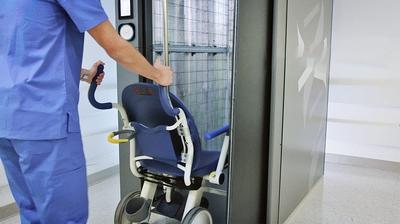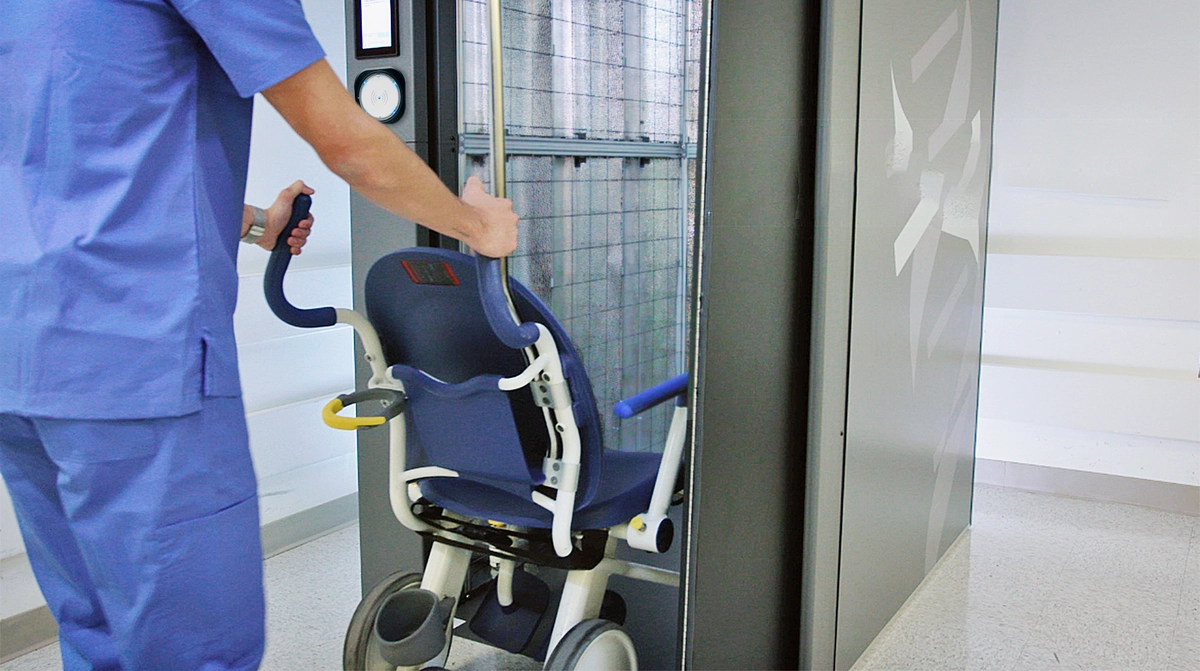High expectations: Reader for use in the medical sector


The COVID 19 pandemic has once again shown how essential the sterilization and disinfection of medical equipment and accessories are in healthcare. In addition to chemical methods, physical processes are also used. These often require the use of high-tech equipment that uses UV, plasma or gamma rays. However, the handling of devices and technologies of this kind requires training. To ensure that legal requirements are met and that only qualified personnel have access, manufacturers and hospitals are increasingly relying on authentication via RFID (radio frequency identification). Read the following article to find out what requirements the industry has with regard to the performance and appearance of RFID readers.
According to the Robert Koch Institute (RKI), around 18 million people are treated as inpatients in German hospitals and other healthcare facilities every year. Hygiene protocols are used to keep the risk of infection for patients and staff as low as possible. Sterilization and disinfection measures make a major contribution in this context - whether for surgical instruments, surfaces, equipment, beds or patient transport chairs. However, the highly technical equipment required for this must be used properly to produce the desired result. In addition, handling the equipment is not without risk - for example, UV radiation can cause damage to the eyes and skin, among other things, if used improperly. Manufacturers are therefore turning to authentication using RFID as a reliable security barrier. In this way, hospitals can ensure that their personnel are only authorized to operate the devices after successfully completing training.
The challenge: finding the right reader
Finding the right reader for such an application often proves challenging for manufacturers because the list of requirements is long. For one, the reader must support the security and functionality needs of a manufacturer's hospital customers. That means it must be robust, contactless and easy to use. It should also enable reliable access control and be able to process different RFID card technologies at the same time. This aspect is particularly important if different technologies are already being used in a hospital or a hospital group with several locations. In order to protect confidential information such as employee names and badge numbers, a reader that supports advanced security protocols and encryption is also required. Another requirement: the reader should offer the option of audible and visual feedback for the user, making it easier to use. Last but not least, it must be easily reconfigurable to meet emerging security and functional requirements. In addition to the internal attributes, however, the reader's aesthetics also count in the hospital environment: the device should fit seamlessly into the visual appearance of a clean, efficient hospital environment.
The case study: UV-Concepts
The example of UV-Concepts shows how the requirements in terms of safety, flexibility and appearance can be solved. The American company develops and manufactures innovative, non-contact disinfection solutions. At the heart of the UV-Concepts portfolio is a UV-C chamber that irradiates its contents with ultraviolet UV-C waves to safely kill germs. For example, large items such as wheelchairs can be disinfected. To protect the chamber against unauthorized use by untrained employees, UV-Concepts relies on the TWN4 Palon Compact Panel Reader. Elatec's reader was chosen based on market research that showed it met all of the company's criteria. The reader features a robust yet flexible software architecture combined with a panel display suitable for high-end devices that is visually compelling. In addition, it can be configured for more than 60 RFID card transponder technologies. For UV-Concepts, this is an advantage that maximizes their market opportunities, as the reader allows the company to best serve those customers who use multiple technologies. With its flexible architecture and open API, the Palon can also be easily reconfigured. Enabling new card technologies and updating firmware through remote configuration or a contactless upgrade card are also straightforward.
THE ELATEC NEWSLETTER Your authentication update
As a frequent reader, you will always be up to date with the latest information on the topic of authentication, know the current trends and receive valuable tips. By signing up to our newsletter, we will make sure you won't miss any new blog articles ever again. And on top, you get even more exciting news on our products, events and industry trends.